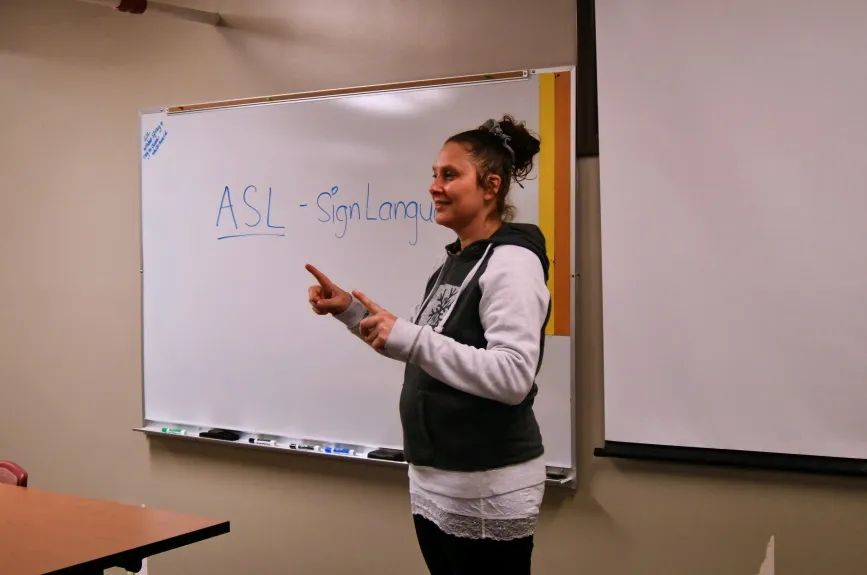
Getting to Know April Buscher
February 1, 2021 | by rebecca stewart
As previously mentioned in SLM's February 2021 article on Baby Sign Language, April Buscher was born with severe hearing loss and, over the years, lost most of what little hearing she had, now suffering profound hearing loss. In March 2020, she decided to get a cochlear implant for her left year, changing her life in many ways. This allows her to talk on the phone and has resulted in an 80% communication improvement in understanding speech in sound. As a child, Buscher shares that she struggled with pronunciation and speaking words, thus taking several years of speech therapy through Billings Public Schools and learning sign language as a secondary method of communication while attending Rose Park Elementary.
Buscher’s love of music and performing arts is rooted in her childhood, and she recalls putting her ears against speakers to hear the sounds. Though she couldn’t hear all the sounds, she could feel the beat. She began taking dance at age 12 and started her dance group through the Yellowstone Boys and Girls Club at 14. Now 49, Buscher continues teaching dance (classical ballet) through the Billings YMCA.
A wearer of many hats, Buscher is currently a computer technician for Billings Public Schools, a holder of multiple degrees, and in addition to teaching dance at the YMCA, teaches WordPress, Web Design, and Sign Language for Community Education at the Lincoln Center.
Community Education:
Introduction to Sign Language | Sign Language I | Sign Language II
Intro to Sign Language- Divided into three sections: Basic signs, beginning words, and fingerspelling. This course highlights the differences between the deaf and hard of hearing community and the challenges individuals face with these types of disabilities. Differences between ASL (American Sign Language) and SEE (Sign Exact English) are explored.
ASL is used by the deaf community, while SEE is often used by those with moderate to severe hearing loss. Both use the same word signs, but sentence structure is different. ASL does not use exact English, using ASL sentence structure: time, topic, referent. Dr. Bill of Lifeprint.com explains it as a subject-verb-object structure.
SEE is what Buscher uses, as she is used to the spoken English language.
Buscher also introduces facial expression and body language, which is used to enhance the tone and feeling while speaking in sign language. She explains,
When a deaf or hard of hearing person is watching an interpreter, the speaker’s mood or tone is not heard. Therefore, the interpreter must use facial and body expressions to show whether the speaker is angry, excited, bored, serious, or funny. The deaf and hard of hearing community relies on visual expression as part of the communication methods with sign language.
Sign Language I- Focuses on ASL sentence structure to help gain communications with the deaf community.
Sign Language II- Learn SEE as a challenging exercise using word and question games, like Family Feud, to sign in exact English. The goal is to familiarize students with both sign language methods.
In addition to teaching students how to better communicate with the deaf and hard of hearing communities, Buscher has also taught adults with children who do not have a hearing impairment to use sign language to communicate with their disabled child with autism and Down syndrome. She reminds us that sign language is not limited to those with hearing impairment or deafness. Sign language is an excellent alternative to connecting with children with different disabilities that struggle with communication.
Never miss an issue, check out SLM's digital editions here!





